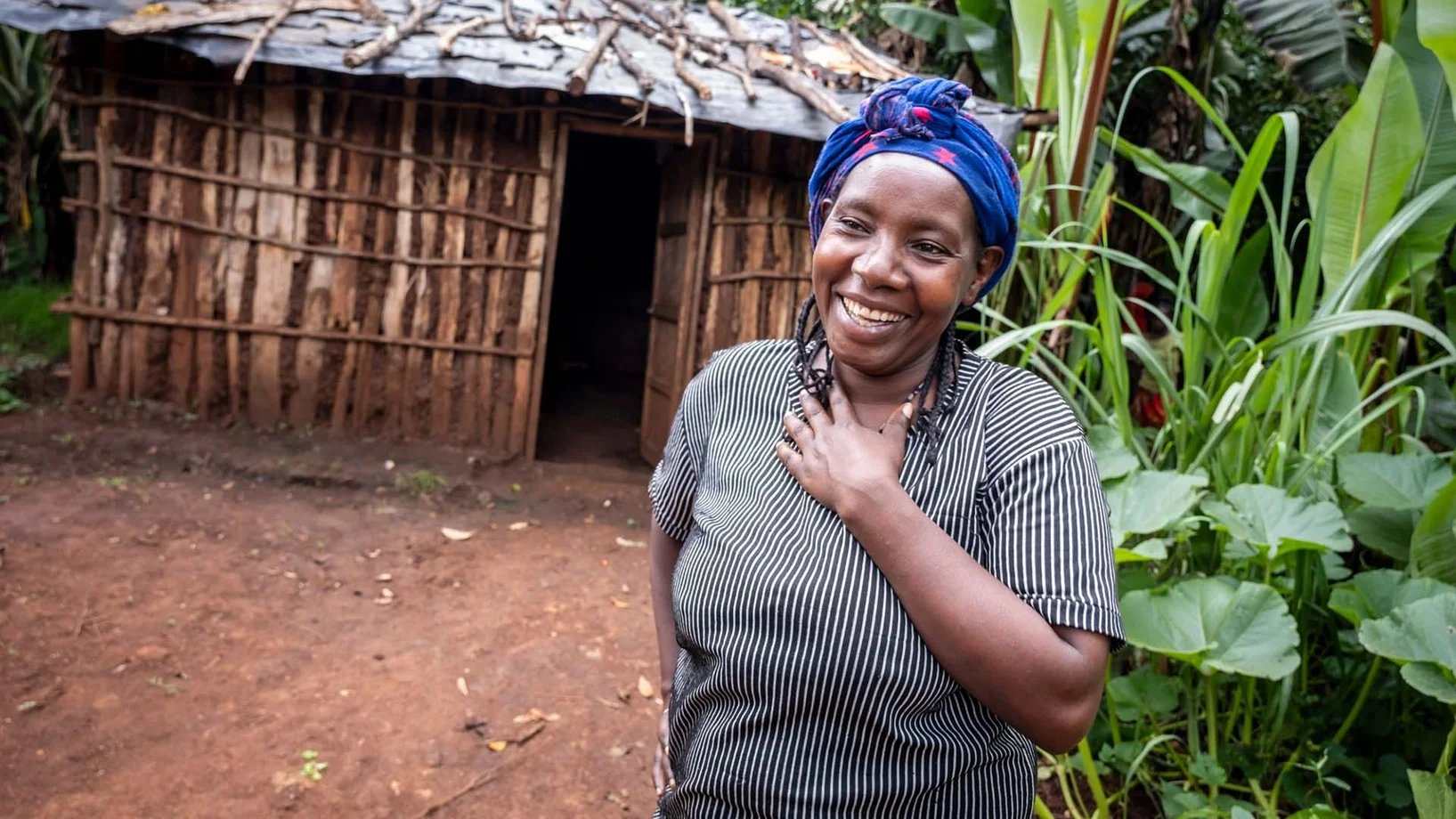Source of relief
A spring catchment not only provides clean drinking water. For 15-year-old Tigist, the new infrastructure also means an end to a daily ordeal. "Finally, I'm not getting hit anymore," she reports.
When night gives way to dusk, the mother wakes her daughter. Tigist Nuguse washes her sleepy face with a handful of water. Then she slips on her plastic sandals and runs off.
It is six in the morning. She has exactly two hours. School starts at eight. The walk to the fountain takes an hour at a normal walking pace. If Tigist walks quickly, she can make it to class on time.
But there is a queue at the well. Tigist waits impatiently for her turn. Then, finally, she can fill her canister. With a twisted face, she lifts it onto her back and ties it tightly with strips from cut-up artificial fertilizer bags. The load weighs twenty kilograms. The plastic strips cut into Tigist's shoulders. She hurries back to her parents' house, beads of sweat on her forehead.
Will she make it in time? If she is late for school, the teacher orders her to stretch out her right hand, palm up. Then the bamboo pointer comes crashing down. The pain burns, but the humiliation burns even more.
Oh, the anger! Not at the teacher, but at the mother who forces her to fetch water. Tigist's bitter anger boils up inside her until she comes home from school in the afternoon. Sometimes her mother says: "I'm going to fetch water tomorrow!" Tigist feels her mother's remorse and grief. After fifth grade, her mother dropped out of school because she got married at 15, as was the custom in her time. But the day after next at the latest, Tigist is on her way to the water source again. Two canisters, 40 liters, that's the amount the family needs for washing, cooking and drinking. "I can't possibly go to fetch water twice in one day," explains her mother: "I have so much other work!" So Tigist runs again and hopes that she will make it to school on time...
This description of her previous situation comes from Tigist herself. She is sitting on the edge of the new spring in her home village of Bangusa in the Abaya district in southern Ethiopia and tells her story. "I am so happy that this ordeal is over!" says the teenager. "Today, fetching water is much easier and I always get to school on time."
This is thanks to People for People . Where previously the water from a spring ran down the hill in many streams, Karlheinz Böhm's Ethiopia Aid has built an infrastructure that provides enough clean drinking water: a spring catchment now collects the water from the spring, it is filtered through gravel and flows into a reservoir. 47 families now get their water from one outlet.
When the spring had not yet been built, many families drew water from the streams to avoid having to travel to the well, which was far away. They kept getting giardia, a diarrheal disease, especially the children. That is now over. And Tigist's life has improved significantly: the two-hour trips to the well are no longer necessary. The new spring is close to her parents' house, and it now takes her half an hour to fetch water every day. "I also have enough time for my homework," says Tigist happily. Her favorite subjects are language subjects, English and Amharic. She would love to become a teacher - one who treats her students well and supports them: "I want to work for the development of Ethiopia."














